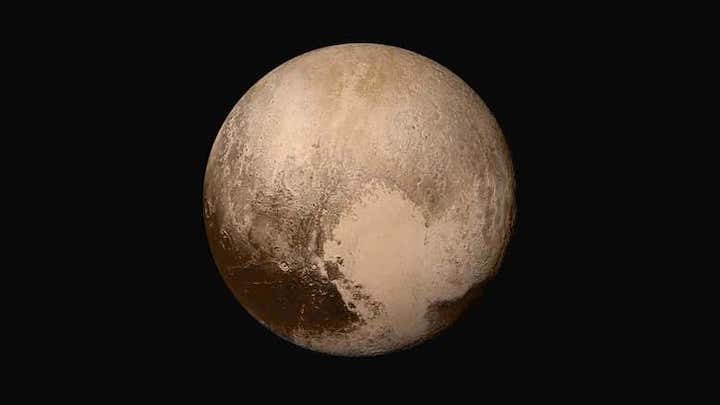6.02.2020

NASA/Johns Hopkins University Applied Physics Laboratory/Southwest Research Institute
Pluto’s atmosphere is spinning backwards because of a strange “heartbeat”. Cyclical changes in nitrogen ice on the surface drive winds that blow in the opposite direction to the frigid world’s spin.
When NASA’s New Horizons spacecraft flew past Pluto in 2015, it spotted an enormous, bright heart shape on the surface. One lobe of the heart is a deep basin called Sputnik Planitia, which is filled with nitrogen ice.
When the sun rises over Sputnik Planitia, the ice heats up and some of it turns into gas, floating up into the atmosphere. At night, it cools down and settles back into the basin as ice again. Tanguy Bertrand at NASA’s Ames Research Center in California and his colleagues used a weather forecast simulation to determine how this cycle would affect the circulation of Pluto’s atmosphere.
“Every day you have what we call a heartbeat,” says Bertrand. “You release nitrogen into the atmosphere and condense it back onto the surface – it’s like a heart pumping blood in the body.”
They found that this cycle causes nitrogen winds that blow westward around Pluto. They are strongest at the western edge of Sputnik Planitia, where they appear to create dark streaks as they rush out of the basin.
These winds cause the atmosphere to rotate in the opposite direction to the dwarf planet, which spins toward the east. This isn’t confirmed to happen anywhere else in the solar system. “Pluto’s atmosphere gives us a new laboratory to explore how atmospheres behave in general,” says Bertrand. It is surprisingly different from the other atmospheres we know, he says.
Quelle: NewScientist
